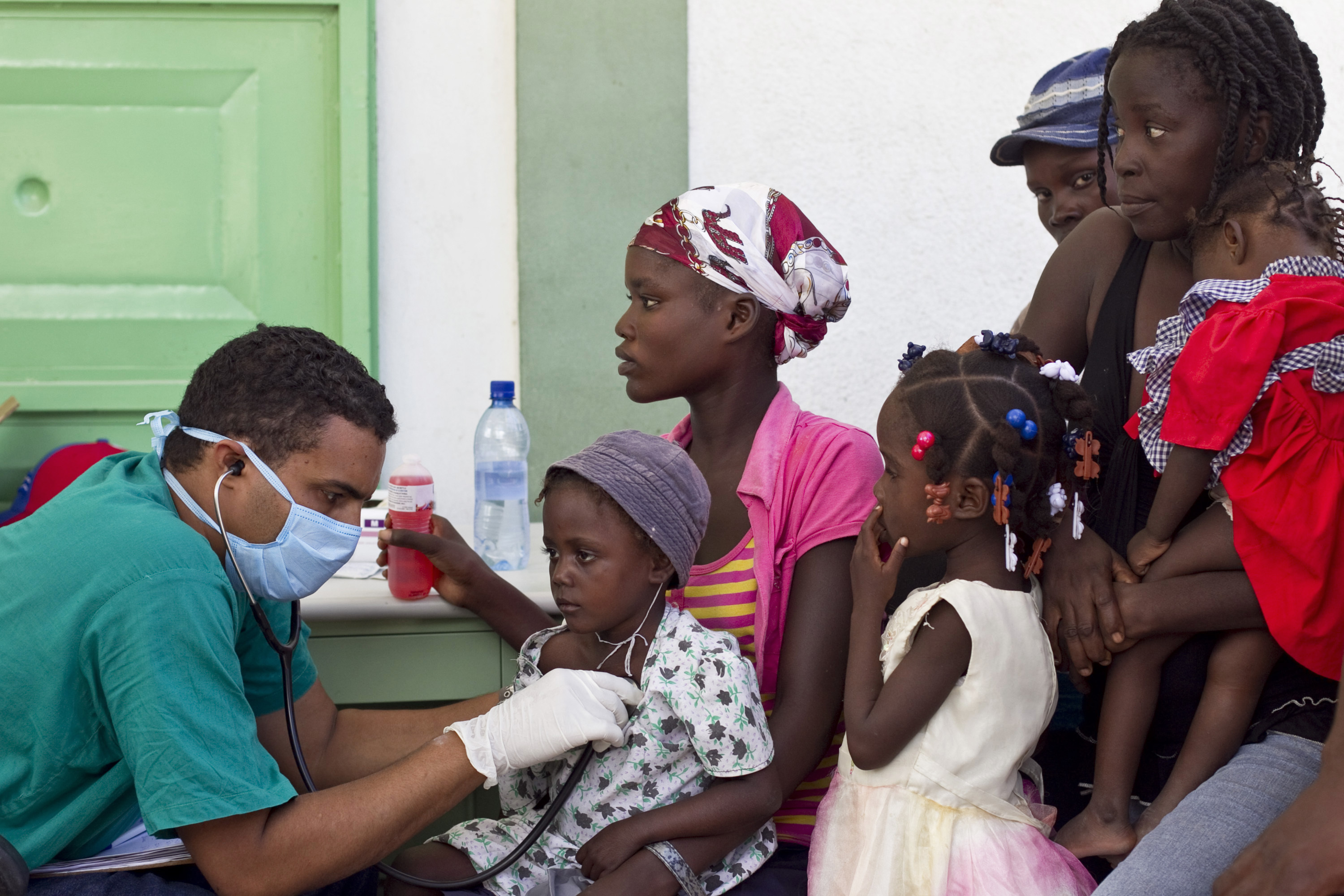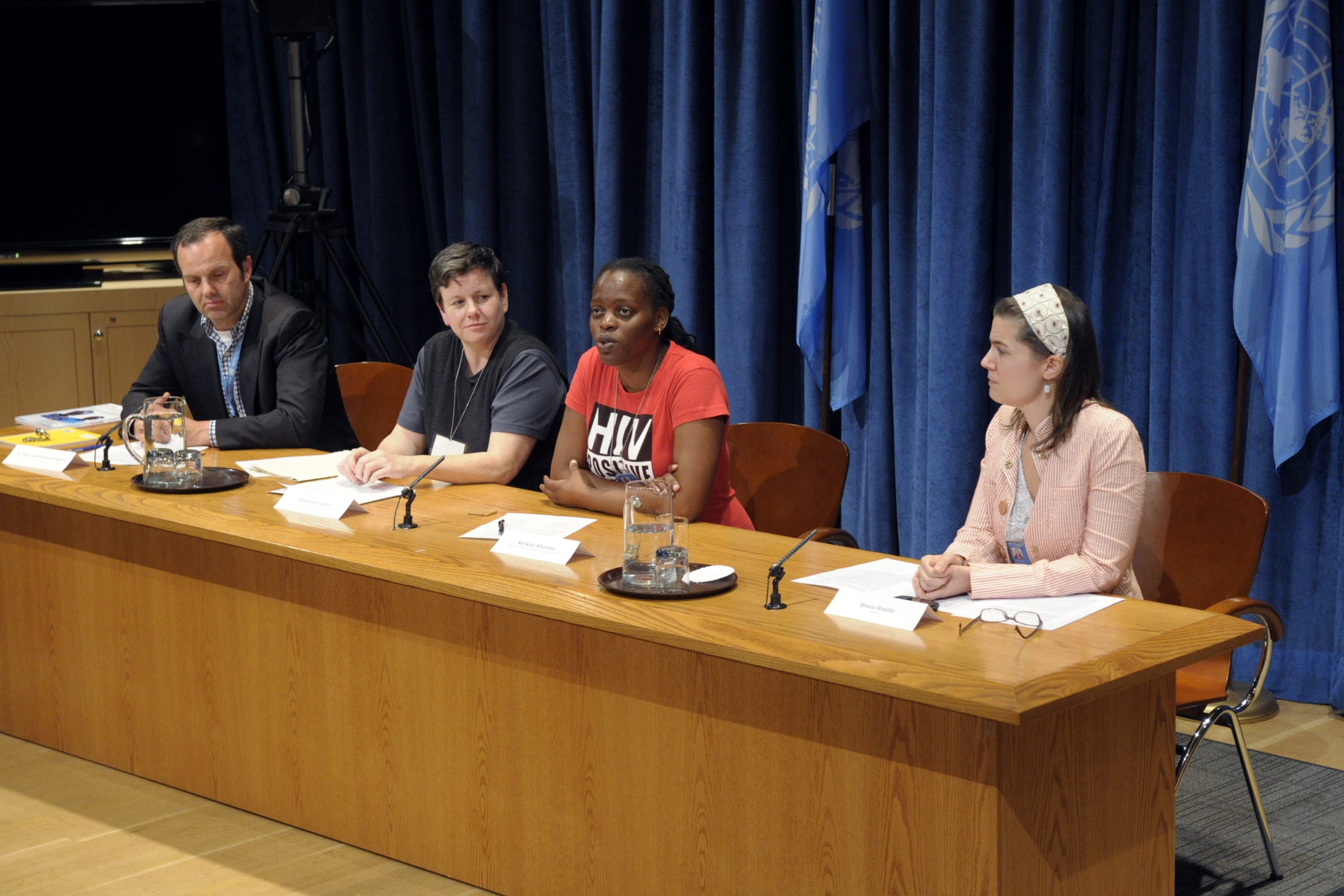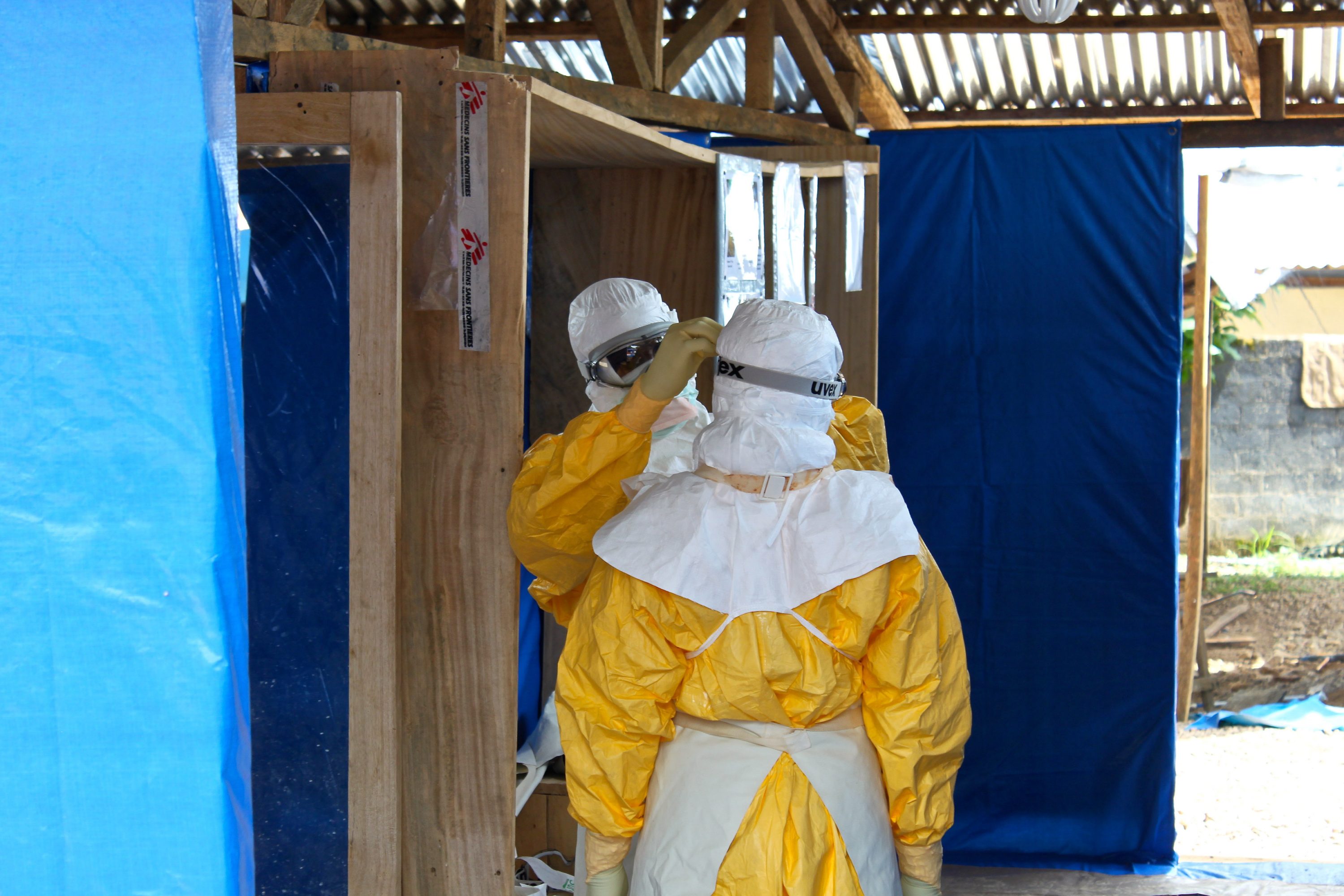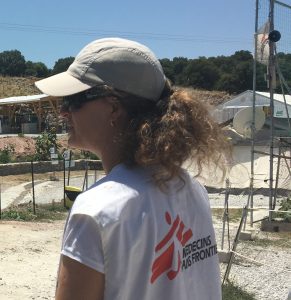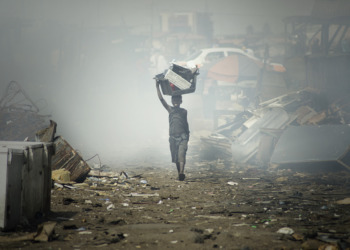EDITOR’S NOTE: THIS PIECE IS AUTHORED BY, Áine Markham. Since September 2014 she has been the Vice-President of the International Board of Médecins Sans Frontières (MSF) where she continues to work on global health, specifically around humanitarian issues.THIS PIECE IS PART OF A SERIES EXPLORING THE SUSTAINABLE DEVELOPMENT GOALS. SEE THE INTRODUCTION TO THE SERIES HERE.
It is puzzling how the globally applauded launch of the Sustainable Development Agenda in January 2016 has coincided with the apparent demise of what is now being referred to as the “golden age of health.” Is it possible that an agenda purported as ambitious, universal and all-inclusive could equally be the predictor of stagnation or potential regression of global health gains made over the past 15 years? Logically, Sustainable Development Goal (SDG) number 3: “Ensure healthy lives and promote well-being for all at all ages”, with 11 targets addressing key health challenges, should build on health gains achieved following the Millennium Development Goals (MDGs) era.
Perhaps by examining how the MDGs contributed to this “golden age of health care” this dilemma can be better understood. Unfortunately, there is little agreement on which of the many health gains can be directly attributed to the MDGs. Frequently criticised for the narrow scope of targets, one failing of this era was the misconception that global averages could be easily converted into national achievements. National health figures obscure subnational and key population realities and specific population needs became blurred by global targets. While globally maternal and infant mortality declined 2.7 percent per year from 2003 and 3.5 percent from 2000 respectively, the poorest and most vulnerable populations in the world saw practically no benefit. Médecins Sans Frontières (MSF) teams continue to work with populations in Chad, the Democratic Republic of Congo (DRC) and Central African Republic (to name but a few) that have seen little health improvement over the past 20 years.
However, some perhaps unexpected but important benefits can be attributed to the MDGs. Firstly they transformed a non-legal, non-binding international agreement from rhetoric to policy. By galvanising the international community behind specific health goals, a long-awaited push towards health as a necessity and not a commodity seemed within reach. The “Macroeconomics and health” Initiative changed the perception of health as merely a consequence of economic growth towards a healthy population as pre-condition for economic and human development. The MDGs promoted health as a global public good (and almost a human right) as described in the Alma Ata Declaration of 1978 and pushed policy makers to recognise the failure of health strategies over previous decades. It brought killer diseases such as HIV/AIDS, Tuberculosis and Malaria that predominantly affect populations in poor resource settings into sharp international focus.
IN THE PHOTO: Nonkosi Khumalo (second from right), Chairperson of the Treatment Action Campaign speaks at a joint press conference with MSF ahead of the UN’s summit on HIV PHOTO CREDIT: UN Photo/Evan Schneider
Perhaps most importantly, it created international financial backing towards these objectives. Development assistance for health (DAH) grew 11.4 percent annually from 2000 – 2010, increasing from US$6 billion in 1990 to US$38 billion in 2013, where it plateaued. It saw the creation of Global Health Initiatives (GHI) such as GAVI and the Global Fund (GF) whose mandates were to mobilise funding, disbursed through new funding mechanisms specifically targeting highly vulnerable populations in diverse geographies.
By working with new, more inclusive funding mechanisms and involving civil society, GAVI and the GF broke traditional donor taboos and funded service delivery necessities such as salaries for health workers and medical commodities. Civil society initiatives acted both as drivers of new models of care and watch-dogs on the implementation of state promises towards health programmes.
Related article: “INSIGHTS INTO HUMANITARIANISM, AFTER OVER 20 YEARS WITH MSF“
Nonetheless, the SDGs have some unintended knock-on effects, not least that they cannot be seen in isolation from trends and shifts within global health architecture.
Promoted as the time for countries to set their own development agendas, the emphasis appears more on countries resourcing those agendas, or rather for Organisation for Economic Cooperation and Development (OECD) donors to pay less. Prior to the June 2015 Addis Ababa Action Agenda meeting, it was already understood that the number of OECD donors honoring overseas development assistance (ODA) targets would not increase in the foreseeable future.
The gap between the actual disbursement and the amount available if targets had been honored meant that US$38.4 billion less Development Assistance for Health (DAH) was available between 2000 and 2010. While a global increased in health expenditure is acknowledged and predicted to continue, there remain major differences within and between countries. However, this trend has been translated into an overly optimistic and non-evidence based belief that middle-income countries (MIC) could now cover the bulk of the costs of their population’s health care.
Countries graduating up the income ladder shift within international financial markets move from concessional to non-concessional grants and loans, and lose purchasing privileges for essential medicines, vaccines and medical commodities. The impact of “graduation” on health is slowly becoming apparent. Frequent revisions of GAVI and GF funding allocations have left the Global Health Initiatives (GHIs) scrambling to ensure that populations key to fulfilling their mandates are not excluded from necessary funding.
Middle-income countries (MIC), home to the majority of the world’s poorest people, with the greatest disease burden, are progressively excluded or marginalized from GAVI and GF funding. A pilot study from 2012 estimated that the financial burden of vaccines for countries “graduating” out of GAVI would increase from US$8 million to US$90 million by 2018, with little insight into where this additional funding would come from and at what cost to other health services.
Yet while the use of Gross National Income (GNI) as a proxy for development is widely discredited, it is extremely difficult to displace. The Equitable Access Initiative, convened by the major global health institutions under the leadership of the Global Fund (GF), recently concluded without agreement on a “simple” framework to guide funding decisions on health priorities that is not primarily based on GNI. This should not be misused as a justification for its continued use, but rather recognition that donors are primarily interested in a simplistic one-size-fits-all solution.
Meanwhile, the emphasis on “domestic resource mobilization” as a tool for increased health expenditure has appeared in parallel with the reintroduction of user-fees for health service delivery.
With an SDG agenda to end poverty and ensure healthy lives for all by 2030, it is surprising to see out-of-pocket expenses for populations being re-introduced in countries as a financial mitigation strategy. The evidence is plentiful, demonstrating that user-fees at point of delivery primarily affect the poorest and most vulnerable populations, creating significant financial barriers while resulting in an insignificant financial gain.
MSF teams are witnessing the reintroduction of user-fees in countries across Africa, including newly ‘graduated’ countries such as Kenya and low-income/least developed countries (LDC) like Malawi. The definition of universal health care (UHC) has long been debated but clearly the reintroduction of proven poverty inducing and health-harming strategies cannot bode well.
Does this mean that UHC is translated into health care that countries can afford, meaning poor health care for the poor? How does this correlate with an agenda to leave no one behind?
For a full mindmap containing additional related articles and photos, visit #SDGStories
Meanwhile concern grows around research and development in health as market prices make it ever more difficult for countries to afford basic health care.
The life-saving, highly effective immunisation programme for under-fives in low and middle income countries (LIC) now costs 68 times more than it did in 2001. Half of this increase can be directly attributed to the exorbitantly expensive pneumococcal conjugate vaccine (PCV), which prevents pneumonia, a leading killer of children worldwide. MSF has been calling upon pharmaceutical companies to lower the price of the PCV vaccines, to gain access for children at the greatest risk and countries with the biggest needs.
As potential Ebola treatments sat on the shelves of laboratories, MSF struggled to provide adequate care for patients in the recent West Africa epidemic. Final trials were never done as poor market potential meant few profits.
Likewise, although anti-microbial resistance (AMR) is widely recognized as a threat to global health there are few new antibiotics in the pipeline, due to the perceived lack of market value of such drugs.
As exorbitant, opaque pricing and lack of registration continue to hamper access to health care, the present medical research and development model is widely considered to be no longer fit for purpose. Access to existing and future treatments at affordable prices requires a disconnect between research and production on one hand and marketing on the other.
IN THE PHOTO: MSF ebola treatment facility in Guéckédou, Guinea PHOTO CREDIT: UN Photo/ Ari Gaitanis
The arrival of Hepatitis C (HCV) cures on the market in recent years was met with a global sharp intake of breath. Public health insurance schemes in the USA and Europe are faced with the dilemma of how to afford such expensive treatments.
Studies have demonstrated that these drugs can be manufactured for as low as US$100 – 250, but market prices for a complete HCV treatment range from US$110,000 to US$300,000. Egypt would need to spend over 50 percent of the national health budget from 2014/2015 to treat 5 million of its 11 million people infected.
Additionally, MSF struggles to scale up HCV treatment programs in many countries due to the failure of some pharmaceutical companies to register their medicines. This leads to difficulties in importing or accessing quality-assured medicines blocking access for people in need.
For those that have followed the evolution of HIV/AIDS treatment, this will come as no surprise. Twenty years ago, models of care and cost of antiretroviral therapy (ART) were seen as incompatible with poor resource settings. Yet public health services and civil society collectively pushed new models of care and generic drugs resulting in 17 million people living with HIV (PLWHA) started on ARTs by 2016. In 2014 alone, MSF was supporting over 220,000 people on ART in 19 countries. The Joint United Nations Programme on HIV/AIDS (UNAIDS) and global health experts agree that the convergence of new treatment models and affordable treatment has brought the world to a critical tipping point (more people on ART than new infections) predicting that with the right investment the AIDS pandemic could finally be brought under control by 2030.
Warning that this is a unique window of opportunity, and that if missed, we could see the AIDS pandemic spiral out of control, UNAIDs proposed to ‘front-load’ new treatment targets by 2020 (90-90-90). 90-90-90 refers to: 90 percent of PLHIV knowing their HIV status; 90 percent of those diagnosed with HIV infection receiving sustained ART; and 90 percent of people on ART achieving viral suppression. For MSF, front loading means both financial backing and the inclusion of PLWHA were missed out by the “AIDS revolution”.
A recent MSF report on West and Central Africa (WCA) highlights the struggles of both low and middle income countries to garner support for HIV/AIDS programmes. WCA accounts for 21 percent of all new HIV infections, 27 percent of HIV deaths and 45 percent of all children‘s infections.
It is hard to imagine how SDG targets can be reached with the present policy and funding emphasis on high prevalence contexts. MSF teams have witnessed the continued stigmatization and persistent treatment gaps for PLHIV in low prevalence countries. In WCA, policy change and context-specific strategies are missing to significantly improve its current low coverage of 24 percent of PLHIV on ART.
Recognizing a funding gap of US$6 billion for the 90-90-90 targets, UNAIDS recently suggested that low-income countries (LIC) and MIC could increase their domestic AIDS spending by 450 percent and 530 percent respectively.
While overall domestic health expenditure on HIV/AIDS did triple in LICs and MICs between 2006 and 2014, this increase is circumscribed to a limited number of countries. This trend is in line with ‘Trojan multilateralism’, which sees bilateral donor policy imposed on multilateral institutions.
A recent open letter from MSF to the GF, raised concerns about the apparent adoption of similar trends to traditional donors including the de-prioritization of service delivery and decision-making based on available resources rather than on people’s health needs. Donor fatigue is imposing pressure on Global Health Initiatives to do ‘more with less’, undermining the strategic investments needed to reach global health targets.
Additionally while SDG 3 targets specify certain health targets, shifts towards other global health priorities are evident.
The present optic of looking at global health through a security lens brings into sharp focus the recent Ebola epidemic, the present Zika outbreak, the unabated spread of anti-microbial resistance (AMR) and the progressive and growing health challenges related to massive global displacement of populations.
During the recent West African Ebola epidemic, as health service provision ground to a halt in affected countries, the predominant action of the international community was inaction. When Europe and the USA treated 24 people that contracted Ebola, five of whom died, fear spread across the globe. Stimulated by panic from within their own borders, ineffective and anti-public health procedures were put in place nationally, while much needed medical care for those actually dying from Ebola was slow to materialize and arrived after the peak of the epidemic.
In the end over 11,000 people died and more than 28,000 people contracted Ebola in Liberia, Sierra Leone and Guinea. These mortality figures do not account for the thousands that died from preventable medical causes such as malaria, pneumonia and even child-birth during the epidemic in all three countries. Seen from a certain perspective these people died from neglect and misaligned international priorities that failed to make the difference between risk and reality.
IN THE PHOTO: Ebola treatment centre run by Medecins Sans Frontières(MSF) in Magburaka, Sierra Leone PHOTO CREDIT: UN Photo/Martine Perre
The impact of globalization on health has consistently demonstrated that ‘national’ plans are insufficient against health issues which are of global concern.
The present tendency to evaluate health needs through a security prism erroneously shifts the focus from actual existing health needs to perceived upcoming health risks. This unjustifiably sees donor funding increasingly targeted at interventions to reduce potential future risks of their own populations rather than real and urgent health needs of populations today.
Of course, while adequate and timely financing, including from external donors, is essential for health care delivery, it is not enough.
Additional elements that can ensure equitable health access for all include sufficient numbers of properly trained health care workers with adequate and accessible health service delivery. It requires coherent and context orientated priorities that include marginalized population groups, evolve with the national disease burden and have the capacity and flexibility to react to epidemics or other medical crisis.
Some would argue that these are all key elements of health systems strengthening (HSS) and resilience. Touted as the panacea for health care in poor resource settings, these ‘new-kids-on-the-block’ have resulted in little change in the structural weaknesses and barriers to care over the past decade.
They have equally failed to clarify what actionable ingredients constitute this magic ‘resilient health systems’ bullet. At best they are one piece of the puzzle and should not be seen as a stand-alone solution.
With a comprehensive, if not exhaustive list of development targets to choose from and an international donor emphasis on peace, security, climate change and increased domestic spending, there is a real fear that this will translate into less and not more investment in health.
Fundamentally, the increased demand on national budgets and apparent disengagement of international donors has converted health care into an option on the SDG “à la carte” menu. Graver still, it potentially obliges countries with shortfalls in health funding to choose between those health services they can and cannot provide, what can be scaled up and which medication or treatment options are affordable.
Health has long been described as a ‘soft sector’, meaning in budgetary terms that it costs more than it contributes. This is because the value of a healthy population, with access to health care, affordable medicines and properly staffed health services is not a financial exercise but a human necessity.
The human cost of poor health has long been discussed but rarely translates into policy, as it is repeatedly drowned out by the neo-liberal economic thinking that continues to underpin funding for Development Assistance for Health (DAH). Therefore, while the MDG era that preceded the SDGs clearly demonstrated that investment in health transforms into necessary health gains for human development, this lesson now appears lost in a post-SDG fog.
Authored by: Áine Markham
 Áine Markham has worked in humanitarian and development for over 20 years. Originally a general and peadiatric nurse, she holds a Masters in Public Health and International Politics. She worked with MSF from 1994 to 2004, both in the field and in Headquarters in Brussels, where she was the Director of Operations from 2000 to 2004. She became an independant consultant in 2004, working for a number of international institutions, non-governmental organisations, foundation and academic institutions on a variety of public health concerns. She re-joined MSF as a public health analyst from 2012 – 2014. Since September 2014 she is the Vice-President of the International Board of MSF where she continues to work on global health, specifically around humanitarian issues.
Áine Markham has worked in humanitarian and development for over 20 years. Originally a general and peadiatric nurse, she holds a Masters in Public Health and International Politics. She worked with MSF from 1994 to 2004, both in the field and in Headquarters in Brussels, where she was the Director of Operations from 2000 to 2004. She became an independant consultant in 2004, working for a number of international institutions, non-governmental organisations, foundation and academic institutions on a variety of public health concerns. She re-joined MSF as a public health analyst from 2012 – 2014. Since September 2014 she is the Vice-President of the International Board of MSF where she continues to work on global health, specifically around humanitarian issues.
Recommended reading: “REVERSING HIV STIGMAS IN DEMOCRATIC REPUBLIC OF CONGO“


